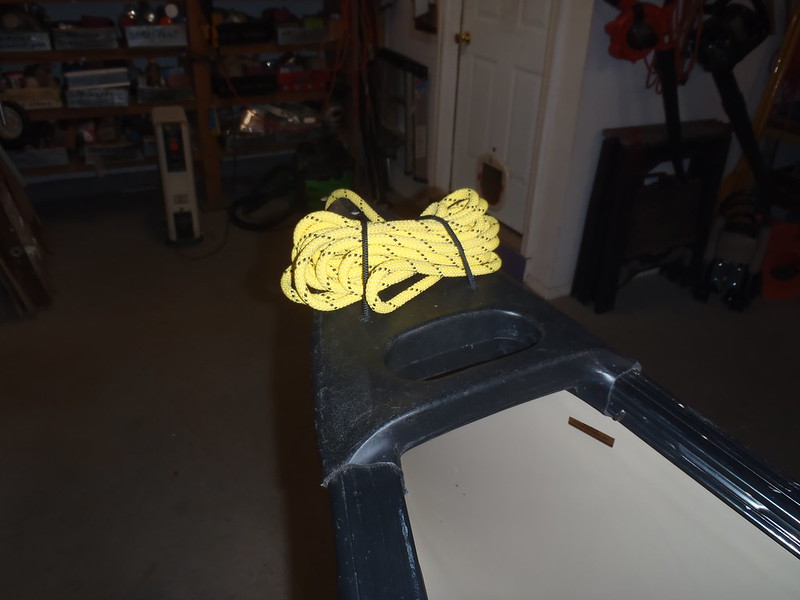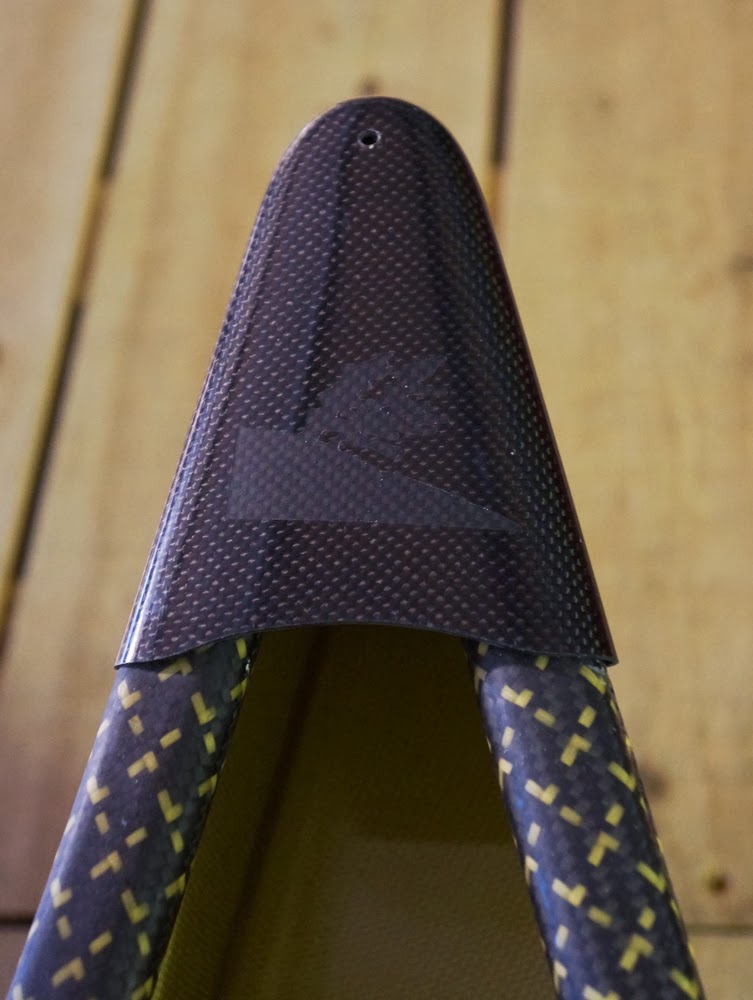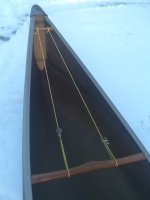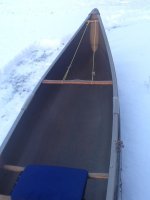G
Guest
Guest
I have bungee bow and stern on all our canoes to hold down lengths of painter line. For that purpose I much prefer a sizable deck plate and a / \ of bungee. And a decent sized drain hole at the very tip.
 PC180150 by Mike McCrea, on Flickr
PC180150 by Mike McCrea, on Flickr
But the tiny deck caps used on some composite hulls stymie me. I usually end up with a short, keel line run of bungee, and a smaller drain hole than I would like.
Plus I am accustomed to securing the painter under and between two runs of bungee, and pulling it straight out the same way, so it is never accidentally wrapped under a bungee. With a single bungee run I grab guess which side wrong half the time. Son of a . . . . .guessed wrong again.
I have tried bungee across the top of the carry thwart, but that is not very comfortable, especially with tubular aluminum. When I want to really grasp the carry thwart, with fingers wrapped around and pulling for all I am worth, I have to drop the painter line loose. Inconvenient at best, and maybe loose rope dangerous at worst.
There are a lot of tripping canoes out there with undersized deck caps. Someone must have come up with a better painter keeper system for use with small deck caps. Anyone?
 PC180150 by Mike McCrea, on Flickr
PC180150 by Mike McCrea, on FlickrBut the tiny deck caps used on some composite hulls stymie me. I usually end up with a short, keel line run of bungee, and a smaller drain hole than I would like.
Plus I am accustomed to securing the painter under and between two runs of bungee, and pulling it straight out the same way, so it is never accidentally wrapped under a bungee. With a single bungee run I grab guess which side wrong half the time. Son of a . . . . .guessed wrong again.
I have tried bungee across the top of the carry thwart, but that is not very comfortable, especially with tubular aluminum. When I want to really grasp the carry thwart, with fingers wrapped around and pulling for all I am worth, I have to drop the painter line loose. Inconvenient at best, and maybe loose rope dangerous at worst.
There are a lot of tripping canoes out there with undersized deck caps. Someone must have come up with a better painter keeper system for use with small deck caps. Anyone?





